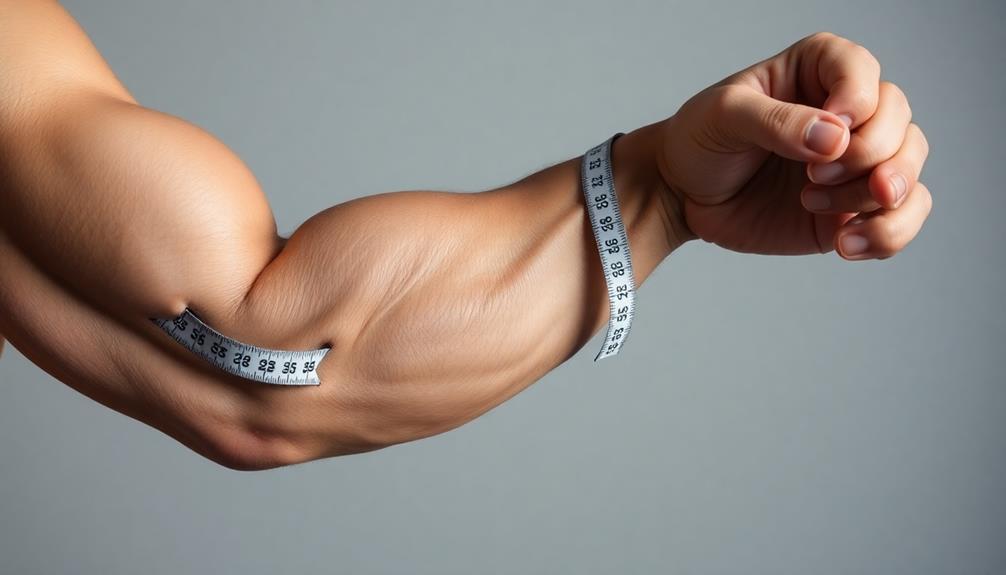To determine if you're gaining muscle, start by tracking visual changes in your body composition. Look for increased muscle definition and changes in body shape. Monitor your strength and performance improvements during workouts. Take regular measurements of key body areas and compare progress photos. Pay attention to how your clothes fit, especially around your shoulders, chest, and thighs. Notice changes in your energy levels and recovery time. Observe improvements in muscle tone and definition. Be aware of increased appetite and nutritional needs. For more precise assessment, consider professional methods like DEXA scans or skinfold calipers. Following these steps will help you accurately gauge your muscle-building progress.
Core Insight
- Monitor changes in body shape and how clothes fit, especially around shoulders, chest, and thighs.
- Take regular progress photos and compare them side-by-side to visualize muscle growth.
- Track strength improvements in your workouts, such as increased weights or repetitions.
- Measure key body areas consistently and record changes in measurements over time.
- Use body composition tracking methods like DEXA scans or skinfold calipers for accurate muscle gain assessment.
Visual Changes in Body Composition

Seeing your body change is one of the clearest signs you're gaining muscle. As you build muscle, you'll probably notice more muscle definition all over. Your arms, legs, and torso will look more toned and defined. Your clothes might fit differently, especially around your shoulders, chest, and thighs. Using a foam roller can help improve flexibility and muscle recovery, which may boost your muscle gains.
These changes can be small and happen slowly. Taking progress photos every few weeks is a good way to track your progress. Stand the same way, wear similar clothes, and use the same lighting each time for the best comparison. You might also see changes in your body shape, like wider shoulders, a more defined waist, or bigger muscles in certain areas. Keep in mind that visual changes can be different for everyone based on things like genetics, diet, and your workout routine.
Strength and Performance Improvements

Tracking your strength and performance is a great way to see proof of muscle gain. As your muscles grow, you'll be able to lift more weight. Keep a workout journal and write down the weights, sets, and reps for each exercise. Over time, you should see steady progress in how much you can lift. Some people, especially those over 40 who want to gain lean muscle, may benefit from supplements that boost testosterone. These supplements might help improve energy and recovery, leading to better workouts.
Pay attention to your endurance and overall athletic ability, too. With more muscle mass, you'll be able to do more reps before getting tired. You might also see improvements in other physical activities, like running faster or jumping higher. These gains in strength and performance are good signs that you're building muscle successfully.
Measurements and Body Statistics

Measuring your body regularly is a key way to track muscle growth. Measure important areas like your chest, arms, waist, thighs, and calves every 2-4 weeks using a flexible measuring tape. Always measure at the same time of day, ideally in the morning before eating. Using cooling towels during workouts can help you stay comfortable and perform your best, which may help you build muscle better.
Besides measuring sizes, also keep track of your body fat percentage using calipers, special scales, or professional DEXA scans. Remember, as you gain muscle, your weight may go up even if you're losing fat. So don't just rely on the scale. Pay attention to changes in your measurements and body composition to really see your muscle-building progress.
Clothing Fit and Feel

Your clothes can indicate muscle growth, even without measuring. You might notice these changes:
- Sleeves feel tighter on your arms.
- Shirts are snugger around your shoulders and upper back.
- Pants fit looser at the waist if you're losing fat.
- Jeans feel tighter in the thigh area.
- Shirts stretch more across your chest.
- You need larger sizes in fitted clothes.
- Fabric stretches across muscular parts of your body.
Along with a good diet and consistent workouts, these clothing fit changes can show that your muscles are getting bigger. Keep in mind, building muscle takes time. Stay patient and stick with your training plan.
Progress Photos and Comparisons
Progress photos are a great way to track your muscle gains. Here's how to do it effectively:
- Take "before" photos:
- Get shots from the front, side, and back
- Wear the same clothes each time (swimsuit or shorts)
- Take photos in the same spot with the same lighting
- Snap progress pics every few weeks:
- Aim for every 2-4 weeks
- Don't expect overnight changes
- Compare photos side-by-side:
- Zero in on specific muscle groups
- Look for changes in muscle size and definition
- Use basic photo editing:
- Put images next to each other to spot differences
- Play with contrast to highlight muscle definition
- Add in body measurements:
- Measure key areas like arms, legs, and waist
- See how visual changes match the numbers
Supplements can help you reach your muscle goals faster. But everyone responds differently, so results may vary. Stay focused on your goals and trust the process.
Weight and Body Fat Analysis
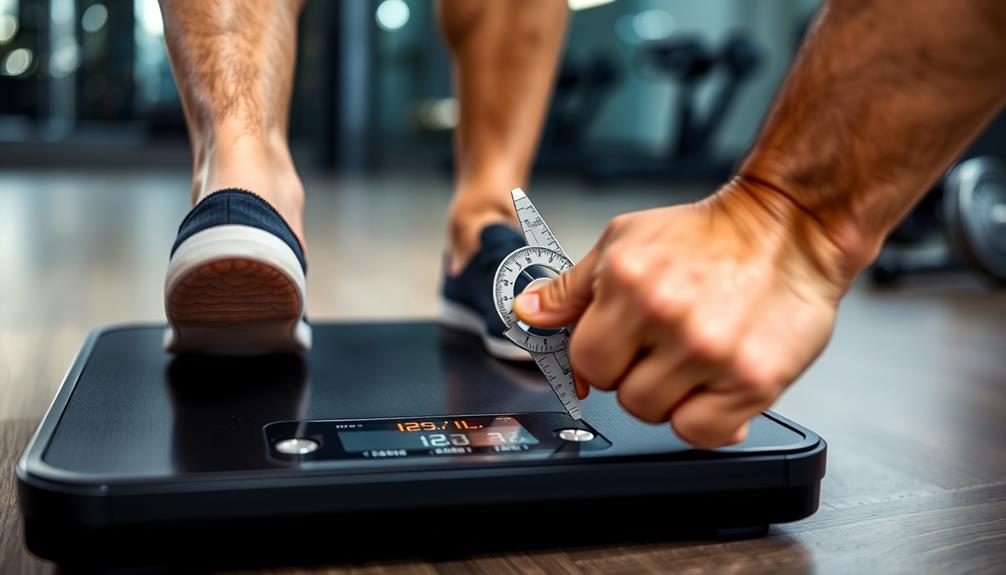
Tracking your weight and body fat is important for building muscle. Weigh yourself at the same time each day and record it. Muscle weighs more than fat, so the scale might go up as you get stronger. Protein powders can help you build muscle and recover faster.
There are a few ways to measure body fat, like calipers, special scales, and scans. Pick one method and use it regularly for consistent results.
If your weight goes up but your body fat stays the same or goes down, you're probably gaining muscle. If both your weight and body fat increase, you might be gaining some fat too.
Energy Levels and Recovery Time
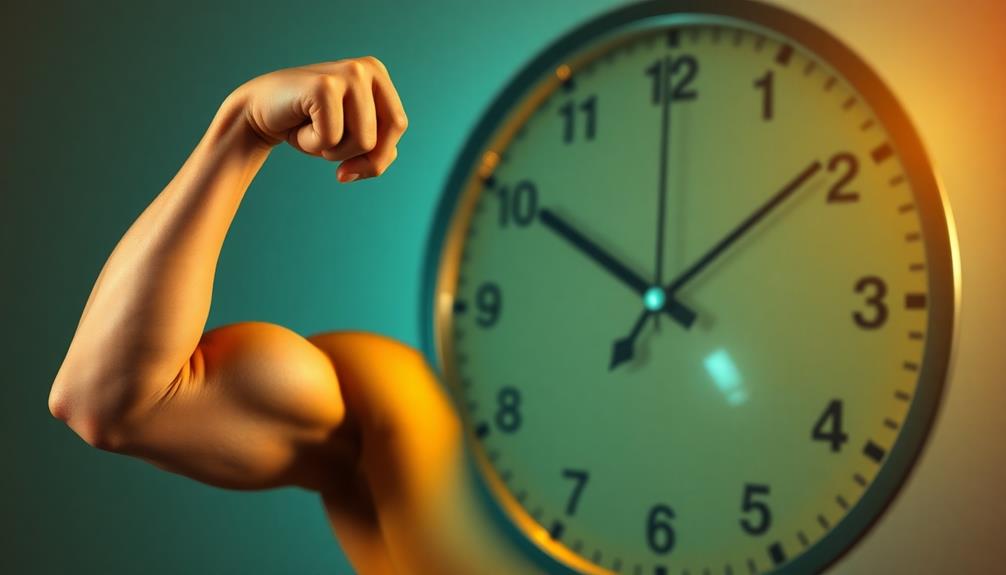
As you monitor your weight and body composition, pay attention to your energy and recovery. They offer valuable clues about your muscle-building progress. Eating right, including carbs after workouts, is key for optimal energy and recovery. Fast-acting, easy-to-digest carbs after exercise refill glycogen stores and support muscle growth.
More Energy: When gaining muscle, you'll likely have better stamina during workouts and daily activities. You may feel more energetic all day and less tired after exercise.
Quicker Recovery: As your body gets better at repairing and building muscle, you'll recover faster between workouts. You might be less sore after tough training sessions and ready to exercise again sooner.
Performance Gains: Watch your strength and endurance improve. If you're consistently lifting heavier weights or doing more reps, it's a good sign you're building muscle.
Better Sleep: Muscle growth often leads to higher-quality sleep, which then supports more gains. Track your sleep patterns for improvements in quality and length.
Muscle Definition and Tone
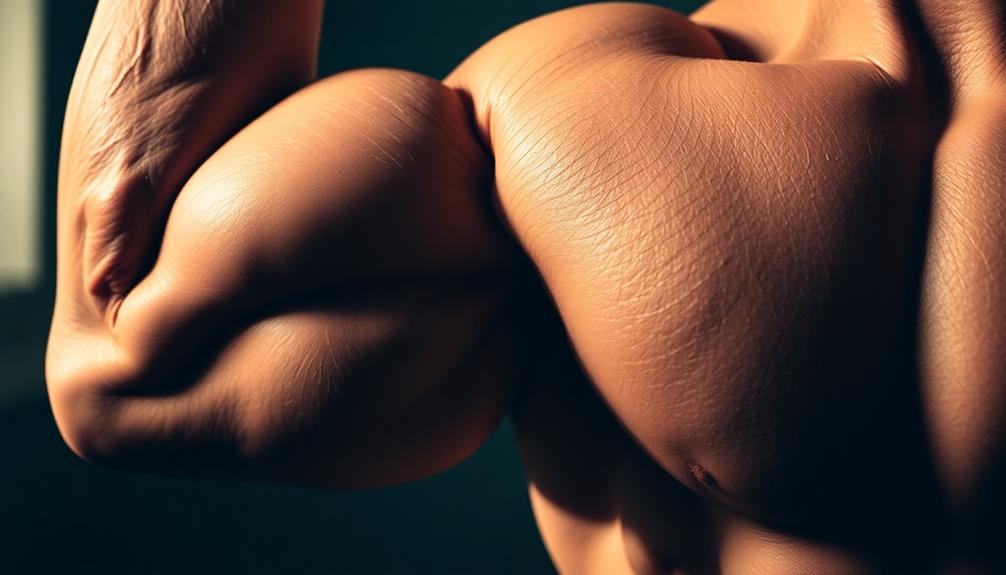
Muscle definition and tone show how well you're building muscle. As you gain lean mass, your muscles will look more defined and feel firmer. Compression gear may help your muscles recover faster and perform better, but it needs to fit right. To check your progress:
- Look at your muscles. You should see more distinct shapes, especially in your arms, shoulders, and legs.
- Feel your muscles when they're relaxed and flexed. They should be harder and more defined.
- Check your body fat percentage. Gaining muscle and losing fat will make your muscles more defined overall.
- Take progress photos regularly to see changes in your physique.
- Notice how your clothes fit, especially around your chest, arms, and thighs.
Nutritional Needs and Appetite
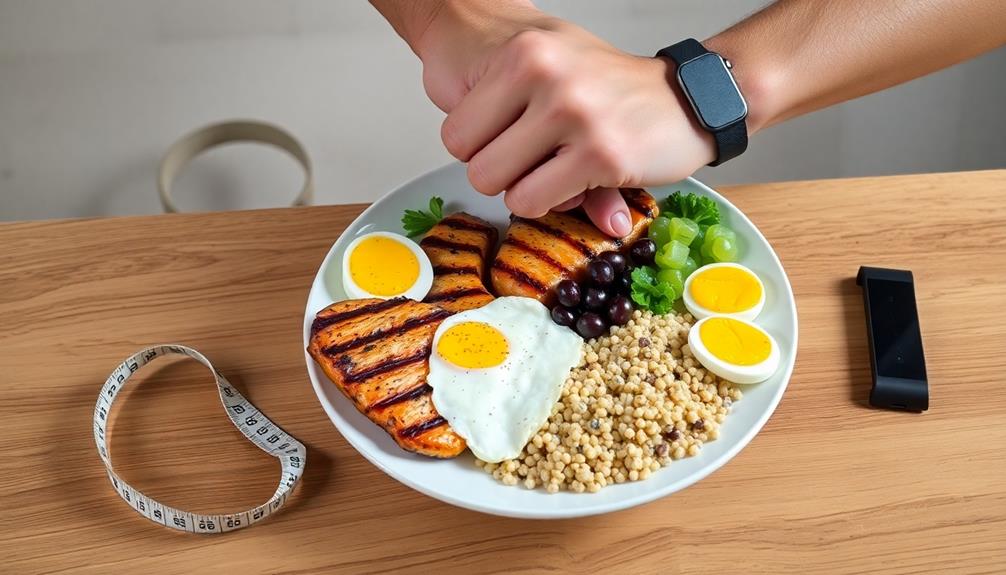
When you're building muscle, you'll need to eat more food to fuel your body. You might feel hungrier and eat more often than usual. This is normal and means your body needs extra nutrients to grow and repair muscle tissue.
To build muscle, it's important to eat enough protein. Aim for 1.6 to 2.2 grams of protein per kilogram of your body weight each day. You should also eat more complex carbohydrates, which give you energy for tough workouts and help restore glycogen levels.
Don't worry if you feel like you're always thinking about food or feeling hungry. This increased appetite is a positive sign that your body is working hard to build new muscle. Focus on eating nutritious foods to support your muscle-building goals.
Professional Assessment Methods
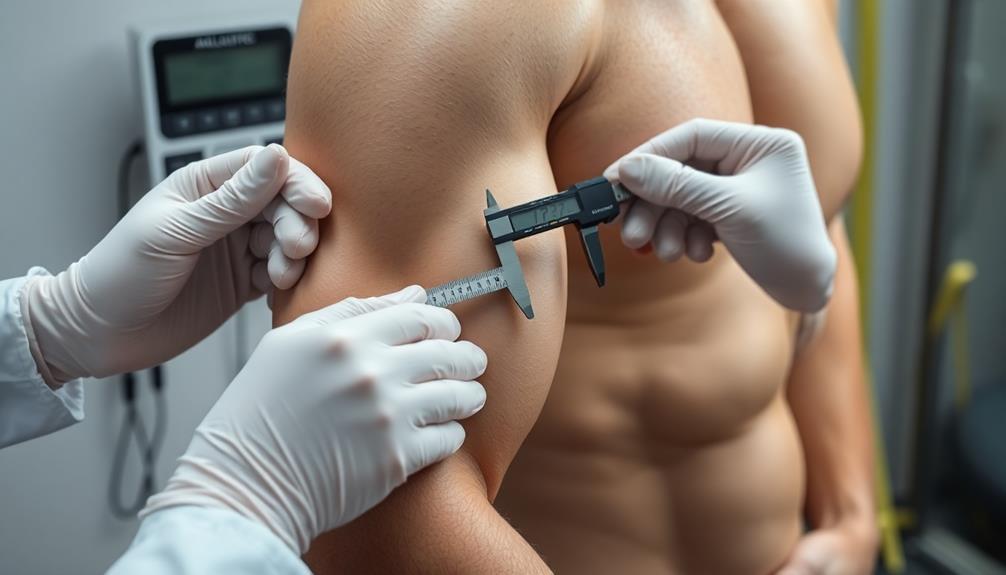
Tracking your nutrition is important, but professional assessments give you a more accurate way to measure muscle gain. Here are some methods:
- DEXA Scans: These scans measure bone density, fat, and muscle mass in your body.
- Hydrostatic Weighing: This method uses underwater weighing to calculate your body fat percentage and lean mass.
- Skinfold Calipers: A professional can use calipers to measure fat under your skin at specific body areas to estimate your total body fat percentage.
- Bioelectrical Impedance: This sends a small electrical current through your body to estimate fat and muscle percentages.
- MRI or CT Scans: These scans provide precise muscle measurements but are usually only used for research.
These professional methods can give you accurate data to track your muscle gain progress. Using these assessments along with good nutrition, including high-quality whey protein supplements, can help you build muscle effectively.
Frequently Asked Questions
How Long Does It Take to See Noticeable Muscle Gains?
You'll typically notice muscle gains within 4-8 weeks of consistent strength training. However, factors like genetics, diet, and workout intensity can affect this timeline. Keep in mind that visible changes often take longer than strength improvements.
Can I Gain Muscle While Losing Fat Simultaneously?
Yes, you can gain muscle while losing fat, but it's challenging. You'll need to balance a calorie deficit with sufficient protein intake and strength training. It's often easier for beginners or those returning to fitness after a break.
Do Genetics Play a Role in Muscle-Building Potential?
Yes, genetics play a significant role in your muscle-building potential. They influence factors like muscle fiber type, hormone levels, and body structure. However, don't let this discourage you. With proper training and nutrition, you can still make substantial gains.
Are There Differences in Muscle Gain Between Men and Women?
Yes, there are differences in muscle gain between men and women. You'll find that men typically build muscle faster due to higher testosterone levels. Women can still gain significant muscle mass but may need to adjust their approach and expectations.
How Does Age Affect the Ability to Build Muscle Mass?
As you age, your ability to build muscle mass decreases. You'll notice slower gains and quicker muscle loss. However, you can still build muscle at any age with proper nutrition and consistent strength training exercises.

